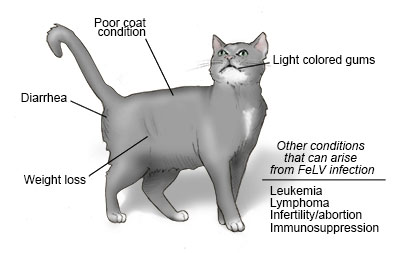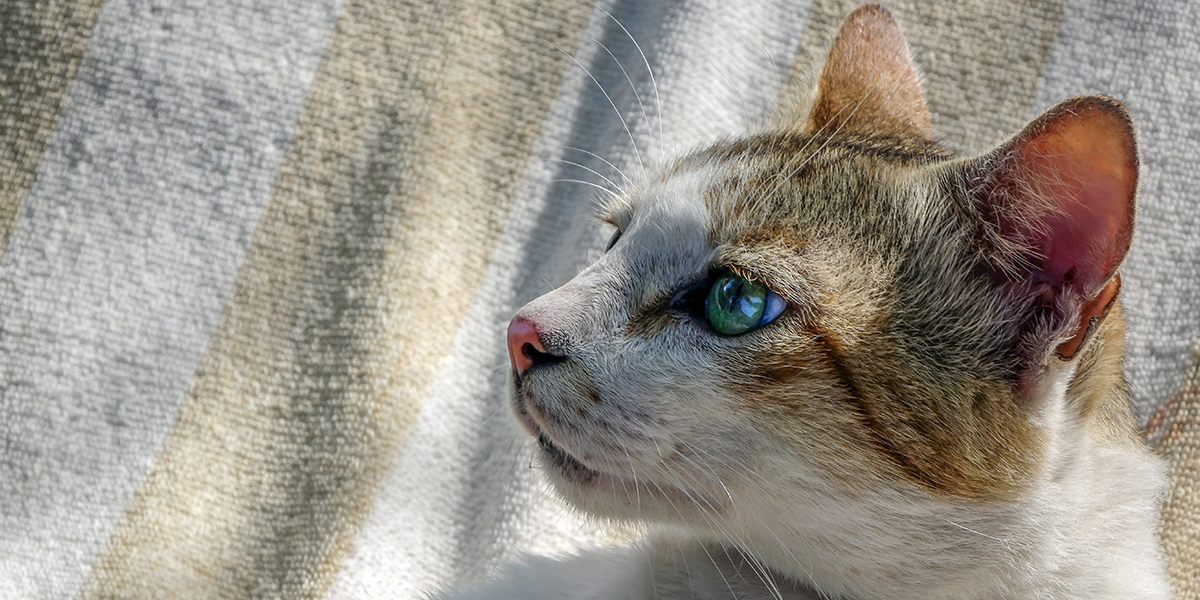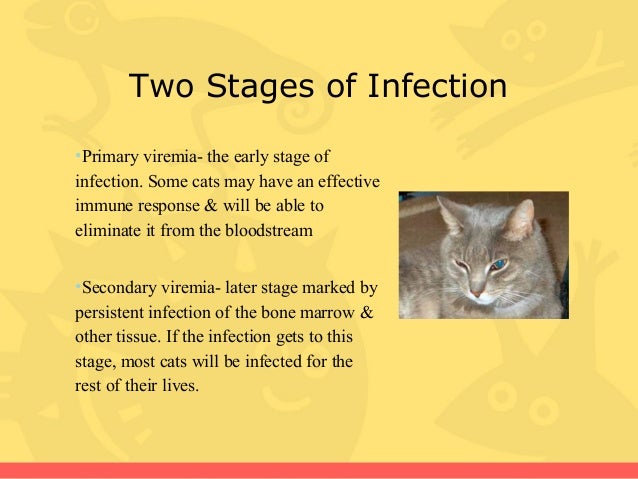Strong cats typically survive longer because their immune system deteriorates at. Feline leukemia virus FeLV is one of the most common infectious diseases in cats being encountered by two to three percent of all cats in the US.
 Feline Leukemia Misconceptions Best Friends Animal Society
Feline Leukemia Misconceptions Best Friends Animal Society
In fact roughly 20 percent of infected felines live more than three years although quality of life may be diminished explains the ASPCA.

Do cats die from feline leukemia. It is the most common cause of cancer in cats it may cause various blood disorders and it may lead to a state of immune deficiency that hinders the cats ability to protect itself against other infections. Some cats acquire this infection at a very young age by being born to an FELV-infected female cat others contract this disease through direct contact with saliva from an infected cat. Feline Leukemia Virus FELV is a relatively common viral disease of cats.
Survey research found the average survival rate of FeLV-infected cats was 24 to 25 years. It is estimated that between 2 and 8 percent of cats in any given area that go outside are FeLV-positive. Unfortunately leukemia in cats is not rare.
If you truly love this cat you will come to the conclusion that it is time and call the vet and allow him to go in peace. If a cat becomes infected with FeLV the disease is very often fatal as there is no cure to date. Feline leukemia virus adversely affects the cats body in many ways.
In fact up to 90 of infected pets will die within four years of diagnosis. It is estimated that 85 of cats with feline leukemia will die within three years of the infection being diagnosed by a veterinarian. Unfortunately most cats who develop persistent FeLV die from the virus within 25 years.
Feline leukemia is highly contagious and can easily spread through close contact of any kind. It does not spread to humans or other animals. Feline Leukemia Virus FeLV directly affects the immune system of the cat and weakens it.
Most cats with FELV lead full normal lives but these cats do. Its a tragic and fatal disease that is responsible for many cat deaths worldwide every year. Feline leukemia virus FeLV is a virus that can be transmitted between cats via saliva.
This leukemia is not cancer but rather a virus and cats who have it can live good lives. FeLV in cats is known to lead to death in more than 85 of the cases within three years of infection. No one can tell you when that time is.
FeLV transmission generally takes place during close social contact between infected and uninfected unvaccinated cats. Feline leukemia is transmitted from cat to cat during close social contact. However if you adopt.
Feline leukemia is spread between cats and is easily contracted in the outdoor environment making indoor-outdoor cats at higher risk of catching the disease. Most deaths in cats occur in the first year after diagnosis. Feline leukemia virus also suppresses the immune system making infected cats prone to other diseases.
Referred to medically as feline leukemia virus FeLV leukemia in cats is more common than you may realize. Common symptoms include lack of appetite lethargy fever and weight loss. The disease kills 85 percent of persistently infected cats within three years of diagnosis.
During this time your cat will be very susceptible to a variety of illnesses so make sure to keep a close eye on her health and take her to the vet if you notice anything. Worldwide about 1 to 2 of all cats have FeLV. It is life-threatening and one of the most common cat diseases.
Respiratory symptoms such as coughing sneezing runny eyes or a runny nose may be seen. Some cats infected with feline leukemia will show no signs at all. More than 50 of infected cats die within 2-3 years after being infected.
The same bacteria viruses protozoa and fungi that may be found in the everyday environmentwhere they usually do not affect healthy. It has a high death rate as well with about eighty-five percent of cats passing away from leukemia in the span of an average of three years. The reason why the numbers are so high is because the Feline Leukemia Virus leads to a serious medical condition in cats cancer.
Feline leukemia virus FeLV is a highly infectious disease in cats. As we mentioned earlier next to trauma FeLV is the second most common cause of death among cats. Though one should note that the contagion takes place.
Cats that live indoors only and are never exposed to other felines do not need to be vaccinated against FeLV. The virus essentially attacks the cats immune system and makes the cat susceptible to infections cancer and severe anemia. Due to this the cat becomes susceptible to feline leukemia and all other immunodeficiency diseases.
Leukemia can also commonly cause anemia or. The virus is shed principally in saliva but it is also present in blood urine faeces tears and nasal secretions as well as in the milk of infected mothers. Leukemia is also the second leading killer of cats behind only trauma.
Dying naturally at home for a cat with feline leukemia is not pleasant. In some cases cats with feline leukemia live for up to three years after diagnosis. When symptoms do occur they can appear in almost any form.
Diarrhea andor vomiting may be present.
 Cat Leukemia Causes Signs Treatment Canna Pet
Cat Leukemia Causes Signs Treatment Canna Pet
 Cat Leukemia Causes Signs Treatment Canna Pet
Cat Leukemia Causes Signs Treatment Canna Pet
 Feline Leukemia Virus Cornell University College Of Veterinary Medicine
Feline Leukemia Virus Cornell University College Of Veterinary Medicine
Feline Leukaemia Virus Infection
 Prognosis Of Cats With Feline Leukemia Virus Figo Pet Insurance
Prognosis Of Cats With Feline Leukemia Virus Figo Pet Insurance
 Feline Leukaemia Virus Felv International Cat Care
Feline Leukaemia Virus Felv International Cat Care
 Felv Facts Diagnosis And Transmission Petfinder
Felv Facts Diagnosis And Transmission Petfinder
 Cat Leukemia Causes Signs Treatment Canna Pet
Cat Leukemia Causes Signs Treatment Canna Pet
 Cat Leukemia Causes Signs Treatment Canna Pet
Cat Leukemia Causes Signs Treatment Canna Pet
 Feline Leukemia Understanding The Virus Just Cats Clinic
Feline Leukemia Understanding The Virus Just Cats Clinic
 Cat Leukemia Causes Signs Treatment Canna Pet
Cat Leukemia Causes Signs Treatment Canna Pet
 Spot The Warning Signs Of Feline Leukemia Lovetoknow
Spot The Warning Signs Of Feline Leukemia Lovetoknow

